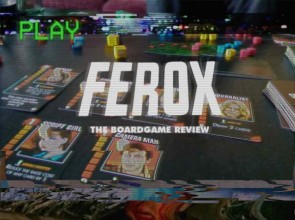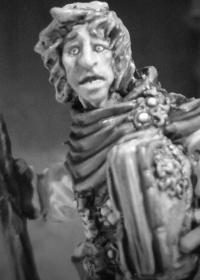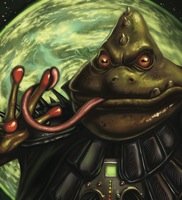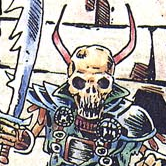I still remember the feeling of renting my first horror movie as a teen from the local video store. With my heart pounding and adrenaline-fueled hands shaking I perused the sun stained cyan coloured boxes with fear and excitement. I clearly remember titles like Nightmare on Elm Street, Henry the Serial Killer and something called Cannibal Holocaust. The images on that box were frighteningly real, shocking and fascinating. It was too much to process as the time but I never forgot those images. Who knew that one day I would actually be able to take on the roles of those characters right in my very own living room?
Ferox is a two-player card game based on the cannibal exploitation films from the early 80’s. Set on an undisclosed equatorial island, one player will take on the role of a documentary Film Crew in search of cannibalistic Natives. When their plane crashes, they find themselves the targets of the blood thirsty Natives, in this case, the other player. The game ends when either the Crew player manages to get at least one survivor Crew Member to the Rescue Point or when the Natives player wipes out the entire Film Crew.
The game is a straightforward, tight and asymmetrical affair that can be played in 60-90 minutes. On your turn you will either draw a card or play a card. If you’re the Film Crew player you can activate some or all of your Crew Member abilities by “Exposing” them. “Exposed” means your dudes can attack or be attacked.“Unexposed” means they cannot attack or be attacked.
The bulk of the game is based around playing cards from your hand in order to take actions such as attacking, equipping an item, healing etc.
The Film Crew player has six Crew cards that feature a special ability, an attack value and a Health Point track for each character. The Natives player’s side consists of four different native groups, each with various numbers of cubes and dice depending on the tribe they represent. For instance the Red Natives (Moxweti) have nine cubes and one die with four chances out of six to score a hit whereas the Green Natives (Tukhua) have fifteen cubes and three die with two chances to hit, two chances to miss and two chances to flee.
The game has six Scenarios or rounds that the Film Crew needs to progress through to reach the Rescue Point. In order to advance to the next scenario both players will take a number of turns until either the Film Crew has killed x number of Natives (represented by skulls) on each scenario card or there are no more Exposed Natives.
In order to play a card from your hand, a player must pay the cost with Rage, the game’s currency. Represented in the game by a pool of eleven cubes, once Rage is spent it goes directly and immediately to the other player. There are three kinds of cards that can be played: Action, Items and Response. A Response card can only be played on an opponent’s turn to negate an Action card played. As the Active player has to spend their Rage first, the opposing player can then turn around and use that Rage to pay for their Response card. This goes back and forth until the game winning condition is met.
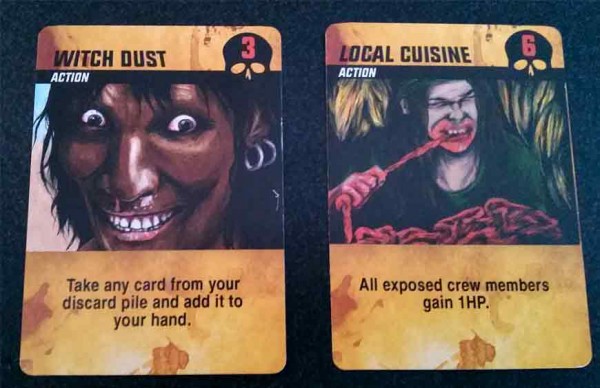
Well shit, let’s get right to it then. I really love this game. This is a smash mouth, visceral, and tense experience. It reaffirms my belief that as gamers, we are living in an amazing time, where games like these are not only made but are also executed phenomenally well. This game hits some of the elements that I love in gaming: a strong theme and setting, excellent narrative moments and a unique, underutilized subject matter. It is also gory, profane and hilarious. The graphic design and overall aesthetic in the game is top notch and creates an immersive atmosphere. From the rule book to the cards, you can tell the designers know this particular horror genre inside and out. Each card is very cleanly laid out, easy to parse at a quick glance and although some of the illustrations are hit and miss on execution they work perfectly to add to its B-movie, Exploitation film setting. How strongly are the Action cards tied to the theme, setting and narrative? Not one line of flavour text appears on a card. The card itself creates the story. For instance, playing the “Thrill of the Kill” card, which says ”1 crew member attacks. If they roll any kills, they may attack a second time...” the accompanying illustration depicts a Crew Member ecstatically bathing in a shower of blood. Perfect.
The game comes with a large deck of over 100 cards which is about 50 cards for each side. Aside from standard attack cards the deck are mostly comprised of unique cards. At the end of a scenario both sides discard their cards in hand, any item cards they’ve played and Unexpose all their dudes. They will then draw two cards from their own Draft deck, pick one and remove the other one from the game, repeating this in order to make up their two-card hand for the next scenario. This makes the drafting portion pleasantly tough as the cards you draw are all REALLY good and the thought of throwing one away is agonizing.
There are 10 “starter” cards that are recommended to create your Draw deck (represented with stars in the lower right hand corner), but as players become more familiar with the game they are encouraged to create their own 10 card deck from the large Draft deck. There are also special event Scenario cards that can be used by swapping out some or all of the regular Scenario cards. These two elements will give the game added replayability and considerably extend the life of the game.
I really dig the Rage currency system, which creates a dynamic ebb and flow of actions between the players. Trying to use cards without giving the other player a lot of Rage becomes a part of the strategic decision making process. That being said the designer created a couple of simple but effective rules to prevent one player from monopolizing all the Rage and grinding the game to a halt.
Although the Natives player has a crap-ton of dudes at his disposal, each Tribe comes with its own pluses and minuses. The Green Tribe has the most dudes and therefore the most dice of any Tribe but due to their peaceful disposition are more likely to flee the scene rather than attacking, whereas the Red Tribe has the fewest dudes, only roll one die but hit more often with no chance of fleeing. Each turn the Natives player has to decide how many of each tribe they want to expose. Too little and the scenario could end quickly but too many and they could lose a large number from one tribe, as hits are selected by the attacking player.
When attacking as the Film Crew, each character rolls a number of dice according to a card Action or their own Fight stat. The beauty of these dice is the one-in-six possibility of the Film Crew injuring themselves in the process of trying to kill the Natives. For each crossbones symbol rolled a character will lose 1 HP. This reminded me of the tackle dice used in Blood Bowl: Team Manager. True story: I was playing this with The Nephew when he decided to attack my Natives with his Drug Runner who was also equipped with an item called Kiddie Cocaine. The card allows a character to perform an attack without playing an Action card and by spending two Rage instead. He attacked rolling the Drug Runner’s three dice (according to his attack value) which resulted in his Drug Runner receiving two injuries and one miss. On the following turn, he attacked with the Drug Runner again but this time he suffered three injuries. Five injuries total, which were half of his HPs. Nancy Reagan was right about drugs all along.
This is a terrifically bloody game of attrition, as both sides will be in various worlds of hurt as the game reaches the end. The tide can turn quickly and what initially seems hopeless can shift in a heartbeat towards a pyrric victory.
The one negative comment I would have to make would be in regard to using cubes on the character card to denote his/her health level. As you will be moving the cards back and forth and/or sliding item cards underneath them, there’s a good chance that the cube could slide around. If Craft Fair ever decides to do a second printing with upgraded components it would be cool to have health markers, an HP dial or a thick character card with a sliding indicator along the side like Betrayal at House on the Hill.
Between the Emperors of Eternal Evil (Mushroom Eaters, Cave Evil, Psycho Raiders) and Craft Fair Games I’m in a wonderfully depraved gaming heaven. Their bounty of darkly humorous, genre inspiring and solid outliers are like gaming succubi; they keep me coming back for more.
Go, grab a copy, adjust the tracking and when finished, remember: “Be Kind. Please Rewind.”
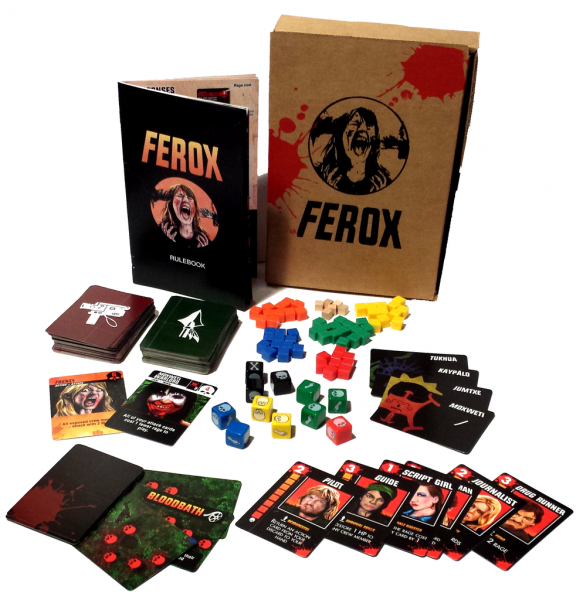
 Games
Games How to resolve AdBlock issue?
How to resolve AdBlock issue? 















